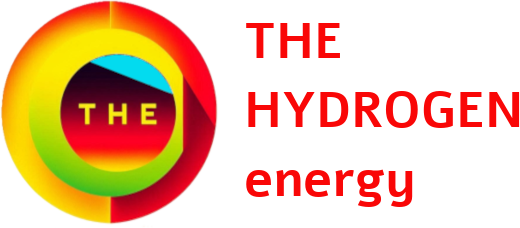Flex Fuel vs Bio-Fuel vs Synfuel vs E-fuel, Zero-Carbon Fuels: Renewable, Low Carbon Fuels in-depth Comparison for a Sustainable Future
Flex Fuel vs Bio-Fuel vs Synfuel vs E-fuel:
1. Renewable Fuel is a broader, more general category. It is not just one type of fuel. It’s a broad concept that encompasses various specific fuel types and technologies.
- Definition: Fuels derived from naturally replenishing sources on a human timescale. Aims for sustainability and reduced fossil fuel dependence.
- Scope: Broad category encompassing Biofuels, E-fuels, Green Hydrogen, and other fuels from renewable sources.
- Key Goal: Sustainable energy source with reduced environmental impact compared to fossil fuels.
- Examples: Ethanol, Biodiesel, Renewable Diesel, E-SAF, SAF, Biojet Fuel, E-gasoline, E-diesel, e-Kerosene, Green Hydrogen, Green Ammonia, Green Hydrogen derivatives, Biogas, RNG.
- Carbon Footprint: Varies widely. Potential for low-carbon, but lifecycle assessment is crucial to verify sustainability.
- Scalability: Variable, depends on specific renewable fuel type and resource availability (biomass, renewable energy sources).
- Cost: Often currently higher than fossil fuels, aiming for cost competitiveness through technology and scale.
- Concise Takeaway: Umbrella term for sustainable fuel sources; diverse types with varying characteristics and sustainability levels.
2. Synfuels (Synthetic Fuels)
- Definition: A broader term for fuels made through chemical processes including both bio & non-biological feedstocks. A broad umbrella term encompassing various fuel types made through chemical conversion. Synfuels, or synthetic fuels, are liquid or gaseous fuels produced through chemical synthesis from various feedstocks other than crude oil. They are essentially manufactured fuels designed to mimic the properties of conventional fossil fuels like gasoline, diesel, and jet fuel. Synthetic fuels are alternatives to all types of fossil fuels
- Types
- Broad category, sustainability depends on feedstock and process.
- Feedstock: Versatile: All types of Fossil fuels (though not a sustainable) Coal, Natural gas etc., Biomass (renewable but limited), Renewable Electricity + CO2 (E-fuels – sustainable), Waste. Waste-to-Fuel: Municipal solid waste (MSW) or plastic waste can be gasified to syngas.
- Production: Chemical processes: Gasification (syngas), Synthesis (Fischer-Tropsch, Methanol, etc.).
- Carbon Footprint: Highly variable. Fossil-based synfuels can be worse than fossil fuels. Sustainable synfuels (E-fuels, biomass-based with CCS) can be low-carbon.
- Engine Compatibility: “Drop-in” potential (gasoline, diesel, jet fuel). Also methanol, DME (may need engine mods).
- Scalability: Feedstock-dependent. E-fuel synfuels (renewable electricity-based) offer highest theoretical scalability.
- Cost: Generally more expensive than fossil fuels currently. E-fuel synfuels particularly expensive.
- Concise Takeaway: Chemically synthesized fuels; sustainability depends entirely on feedstock and production method. E-fuels are a sustainable subset.
3. Flex Fuels (Flexible Fuels) Vehicle – Engine technology concept, not a fuel type itself.
- Definition: Flex fuels are not fuels themselves, but rather a characteristic of flexible fuel vehicles (FFVs). FFVs are vehicles designed to run on a mixture of fossil fuel based gasoline and ethanol, ranging from 0% to 85% ethanol (E85), in some cases up to 100% (E100). In some regions, FFVs may also be compatible with methanol blends.
- Flex fuel vehicles (FFV) have an internal combustion engine designed to run on more than one fuel. Usually, this is fossil fuel based gasoline/petrol blended with either methanol or ethanol, and both fuels are stored in the same common tank.
- Modern flex-fuel engines can burn any proportion of the resulting blend in the combustion chamber because spark timing and fuel injection are automatically adjusted according to the actual blend that is detected by a fuel composition sensor
- Fuel blends (primarily gasoline + ethanol/methanol) for engines designed to run on varying ratios.
- Composition: Blend of Gasoline (fossil) + Ethanol (biofuel – corn, sugarcane, etc.) or Methanol.
- Carbon Footprint: Blend-dependent. Gasoline portion is fossil-based. Ethanol can reduce emissions (lifecycle debated). Overall reduction depends on blend ratio and ethanol sustainability.
- Engine Compatibility: Requires Flexible Fuel Vehicles (FFVs) with fuel sensors and adaptable engine management.
- Scalability: Limited by sustainable ethanol production and continued reliance on gasoline.
- Cost: Blend and component price dependent. Higher ethanol blends can be cheaper at pump (pre-tax/subsidy).
- Concise Takeaway: Fuel blends designed for specific engines. Uses biofuels (ethanol) to reduce gasoline dependence, but not inherently a fully renewable or zero-carbon fuel.
- Definition: E-fuels, also known as electrofuels or power-to-liquids (PtL) fuels, are a specific type of synfuel produced using renewable electricity, water, and captured carbon dioxide (CO2). The core concept is to use renewable energy to electrolyze water into hydrogen, and then combine this “green hydrogen” with CO2 to synthesize liquid hydrocarbon fuels.
- Subset of Synfuels. Synthetic fuels specifically produced using renewable electricity as primary energy input.
- Feedstock: Renewable Electricity (solar, wind, hydro), Water, CO2 (captured or DAC).
- Production: Renewable Electricity -> Electrolysis (Green Hydrogen) -> CO2 Capture -> Synthesis (Fischer-Tropsch, Methanol-to-Jet, etc.).
- Carbon Footprint: Potentially near-zero or carbon-negative (with DAC). Relies on 100% renewable electricity and sustainable CO2 source.
- Engine Compatibility: “Drop-in” replacements for gasoline, diesel, jet fuel, natural gas. Existing engines and infrastructure compatible.
- Scalability: Theoretically high, practically limited by renewable electricity scale-up and CO2 capture deployment.
- Cost: Currently expensive but decreasing. High electricity, electrolysis, and CO2 capture costs.
- Concise Takeaway: Sustainable synfuels powered by renewables. High GHG reduction potential, “drop-in” capability, but currently costly. Key pathway to zero-carbon fuels.
5. Biofuels
- Definition: Biofuels are liquid, gaseous, or solid fuels produced from biomass, which is organic matter from plants or animals. Biofuels represent a renewable alternative to fossil fuels.
- Generations of Biofuels: Fuels derived directly from biomass (plants, algae, waste). Broad category of biologically-derived renewable fuels.
- 1st Generation Biofuels: Produced from food crops (e.g., corn ethanol, sugarcane ethanol, biodiesel from vegetable oils). These have raised concerns about food vs. fuel competition and land use change.
- 2nd Generation Biofuels: Produced from non-food biomass (e.g., cellulosic ethanol from agricultural residues, woody biomass, energy crops, biodiesel from waste oils). These aim to address the limitations of 1st generation biofuels by utilizing more sustainable feedstocks.
- 3rd Generation Biofuels: Produced from algae and other advanced feedstocks. Algae biofuels offer high yields and can be grown on non-arable land, minimizing competition with agriculture.
- 4th Generation Biofuels: Focus on “biofuel production systems” that are carbon-negative, often involving genetically engineered algae or other organisms that capture CO2 from the atmosphere during growth and produce biofuels.
- Feedstock: Biomass: 1st Gen (food crops – corn, sugarcane – sustainability concerns), 2nd Gen (cellulosic – residues, grasses), 3rd Gen (algae), Waste biomass.
- Production: Diverse: Fermentation (ethanol), Transesterification (biodiesel), Hydrotreating (renewable diesel/SAF), Pyrolysis (bio-oil), Anaerobic Digestion (biogas).
- Carbon Footprint: Highly variable. Potential for GHG reduction, but lifecycle assessment crucial. Sustainability depends on feedstock and production (land use, fertilizer, etc.). Advanced biofuels aim for higher GHG reductions.
- Engine Compatibility: Variable. Ethanol (gasoline engines), Biodiesel (diesel engines), Renewable Diesel/SAF (“drop-in” diesel/jet), Biogas (natural gas engines).
- Scalability: Limited by sustainable biomass availability, land competition, and sustainability concerns of biomass production. Advanced biofuels aim to improve scalability.
- Cost: Variable. 1st Gen (can be cheaper, sustainability concerns), Advanced Biofuels (often pricier now, costs decreasing).
- Concise Takeaway: Renewable fuels from biological sources. Diverse types, variable sustainability and scalability. Advanced biofuels aim to improve sustainability and reduce food/land competition.
6. Zero-Carbon Fuels: (is a Performance Goal) is a broader term and a goal rather than a specific fuel type.
- Definition: Not a fuel type, but a performance target. Fuels with minimal or net-zero lifecycle Greenhouse Gas (GHG) emissions (production to combustion). “Low-carbon” is broader, meaning significantly reduced emissions.
- Feedstock: Can be derived from various sources: Renewable Energy, Captured CO2, Water, Sustainable Biomass, Waste – Key is minimizing lifecycle carbon.
- Production: Diverse methods aiming for minimal carbon: Renewable Electricity-powered processes (E-fuels), Advanced Biofuel pathways, CCS/CCU integration.
- Carbon Footprint: Defined by near-zero or net-zero lifecycle GHG emissions target. Requires rigorous Lifecycle Assessment. Carbon-negative potential (e.g., E-fuels with DAC, BECCS).
- Engine Compatibility: Variable. “Drop-in” potential (E-fuels), Hydrogen (modified engines/fuel cells), Advanced Biofuels (variable).
- Scalability: Pathway-dependent. E-fuels offer high theoretical scalability. Advanced biofuels more limited by biomass. Green Hydrogen depends on infrastructure.
- Cost: Generally higher than fossil fuels currently. Cost reduction is a key goal for zero-carbon fuel development.
- Concise Takeaway: Performance target for any fuel. Aims for minimal lifecycle GHG emissions. E-fuels and advanced bio-fuels are leading pathways to achieve zero-carbon fuel status.
Flex Fuel vs Bio-Fuel vs Synfuel vs E-fuel, Zero-Carbon Fuels: Overall Summary:
- Renewable Fuels is the broad category.
- Biofuels and E-fuels are the main types of renewable fuels.
- Synfuels is a wider manufacturing category, E-fuels are sustainable synfuels.
- Flex Fuels are about engine technology and fuel blending, often using biofuels, but not inherently fully renewable.
- Zero-Carbon Fuel is the ultimate goal, with E-fuels and advanced biofuels being key pathways to achieve it.
Flex Fuel vs Bio-Fuel vs Synfuel vs E-fuel: Conclusion:
Flex Fuel vs Bio-Fuel vs Synfuel vs E-fuel: Each of these fuel categories offers potential pathways to reduce reliance on fossil fuels and mitigate climate change. However, they are not without their challenges and trade-offs.
- Synfuels offer the advantage of drop-in compatibility and feedstock versatility, but their lifecycle emissions and sustainability depend heavily on the production pathway. E-fuels, as a subset of synfuels, hold immense promise for achieving zero-carbon transportation but face significant cost and scalability hurdles.
- Flex fuels provide a pathway to utilize bioethanol (or biomethanol) and reduce gasoline consumption, but their environmental benefits are tied to the sustainability of ethanol production and are limited by ethanol’s inherent properties.
- Biofuels offer renewable alternatives from biomass, but sustainability concerns, particularly with 1st generation biofuels, and scalability limitations require a focus on advanced generations and sustainable sourcing practices.
- Zero-carbon fuels represent the ultimate goal, encompassing various fuel types and production methods aimed at achieving net-zero emissions. E-fuels, green hydrogen, and advanced biofuels are key contenders in this category, but significant technological advancements, cost reductions, and policy support are needed to realize their full potential.
Flex Fuel vs Bio-Fuel vs Synfuel vs E-fuel: Ultimately, a multi-faceted approach, combining different alternative fuel strategies and technologies, is likely necessary to achieve a truly sustainable and decarbonized energy and transportation system. The optimal mix of fuels will vary depending on regional resources, infrastructure, and specific sector needs. Continuous innovation, robust lifecycle assessments, and supportive policies are crucial to navigate the complexities and realize the promise of these alternative fuel pathways.
This content is protected by copyright and cannot be reused without permission. For collaboration inquiries or to request content usage rights, please get in touch with us: info@thehydrogen.energy







Add comment